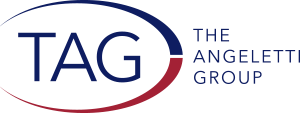Early in my 30 plus years of fundraising, I was given a copy of a book which my experienced colleague at the time said would “be the basis for your success.” Since I was brand new and hungry to learn to be a great fundraiser – which it turned out had been a possible choice in my earliest career assessment testing – I began to literally make the book bedtime reading. The book, Designs for Fund-Raising by Harold J. Seymour (known as “Si”) has been out of print for many years, although readily available online via used book shops.
Several times a year, to this day, and I return to get quotes, review nuggets of wisdom and reflect on what has changed in my 36 years of fundraising (the book itself was first published in 1966).
My conclusion is simple: methods of communication, data management and graphics have changed, Principles of human behavior are timeless.
While not wanting to re-hash the whole first few chapters which forms the heart of the book, some of the highlights include:
- Only 5% or so of people are real Leaders. Start with them. It is not simply people who “talk a good game” but those who have a natural affinity for the great event and opportunity. It is those rare individuals who cherish the public interest. An aura of “boldness and confidence” is what is needed, Si said; “perhaps finding and nurturing such leadership and being content with nothing less constitutes fund-raising’s greatest art of all.”
- Equally rare are those who are capable of giving significantly. And yet, over long periods of time and countless causes, the rule of thirds is consistent: one third of a goal is achieved by the largest ten gifts, the next third by approximately the next 100 gifts, and final third by many, many gifts.
- The cause itself can be represented in what has become known as “the case statement.” It is not simply a brochure or document: it should be “the one definitive piece of the whole campaign. It tells all that needs to be told, answers all the important questions, reviews the arguments for support, explains the proposed plan for raising the money, shows how gifts may be made and who the people are who vouch for the project and will give it leadership and direction.” (p 43) He goes on to say it must “arouse good sentiment” (read: Exciting and Worthwhile) and “arouse the pride of association” with this cause or project.
- Next, as to Prospects, two immutable dogmas: “First, all organized fundraising has to have analysis of the total potential (rating) …for the best of the individual prospects.” This process is best done with the key leadership. It is very time consuming and is often viewed as “just too much work,” but it can spell the difference between success and failure. The second immutable law is noted in broad terms above as “the rule of thirds,” but to achieve that goal, a detailed Gift Chart with goals for each level of giving has proven to be a powerful tool in soliciting gifts at every level.
- All of these things come under the banner of Preparation, which includes the development of a Timeline and Campaign Calendar. All of this happens Prior to actually getting underway. Si titles Chapter 4 “What You Do Ahead of Time Is What Counts Most” and concludes quoting Plato:
“The beginning is the most important part of the work.”
Time and again, when an effort seems “stuck” and fundraising is challenging, I return to the timeless principles of Si Seymour.
Don Stahl is a senior consultant with The Angeletti Group. After more than 30 years serving a variety of higher education, healthcare, social services, and faith-based organizations, Don created Collaborative Partners, LLC and joined The Angeletti Group as a Vice President of Client Partnerships.


